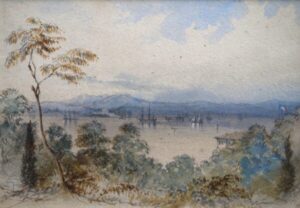Hogarth, William (1697-1764)
Hogarth was born in 1697 near the East End cattle market of Smithfield. His father, Richard Hogarth, made an unsuccessful attempt to open a Latin-speaking coffeehouse, which left the family bankrupt, Richard confined to Fleet Prison, and left the young William fending for himself.
After apprenticing at a silver workshop, where he mastered the art of engraving, Hogarth opened his own print shop. The artist’s first widespread notice came with the publication of The South Sea Scheme 1721, ridiculing the greed and corruption of stock market speculators. A Harlot's Progress 1732 brought Hogarth tremendous success and celebrity, leading to a second morality series, A Rake's Progress 1734.
Throughout the 1730s and 1740s, the artist’s reputation grew and so did his interest in social and moral reform. Hogarth’s work took on a distinctly propagandist tone, directed at the urbanization of London and the city’s problems with crime, prostitution, gambling, and alcoholism.
Industry and Idleness 1747, was designed to encourage young boys to develop a strong Protestant work ethic and thus achieve success. Beer Street and Gin Lane 1751, directed at the widespread sale and consumption of alcohol, were followed by The Four Stages of Cruelty 1751, which condemned rampant acts of cruelty to animals.
Hogarth died in 1764 in his home in Leicester Fields, leaving behind an extraordinary legacy. Working almost entirely outside the academic art establishment, he revolutionized the popular art market and the role of the artist. Hogarth strived to create works of great aesthetic beauty but also ones that would help to make London a better city for future generations.



